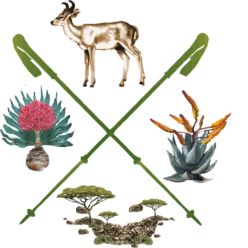A Brief Overview:
The Klipriviersberg Nature Reserve is renowned for its imposing hills, vast grasslands, unique fauna and flora and its variety of stunning walking trails. But little is known of how historically significant the whole area is, especially when it concerns the history of Johannesburg.
Stone-age man must have had a presence in the area because artifacts relating to them that have been found in the reserve and this seems to indicate that they used the reserve as a hunting ground. The Sotho speaking Tswana people lived and farmed in the area from 1400 and after they had abandoned their villages in 1750, a “voortrekker” farmer named Sarel Marais occupied the land in 1850, when he and his family bought the western section of the farm Rietvlei.
The existence of ruins of the Vierfontein dam that are still evident at Silent Pool is testimony of the important role that this perennial stream may have played as a source of water for early Johannesburg. Also war is no stranger to the reserve because a major part of the battle for Johannesburg in 1900 was fought in and around the Klipriviersberg hills.
During the late 1970s, residents and others who were acquainted with the area, and who were passionate about the unspoilt beautiful range of hills to the south of Johannesburg, petitioned the then city council to set the area aside as a nature reserve. The council agreed and at a meeting with the residents, asked them to form an association to assist the city council with the management of the reserve.
Thus in October 1981, the Mondeor Koppies Association was established. The committee decided that Klipriviersberg was a more appropriate name for the reserve and in 1984, the Klipriviersberg Nature Reserve was officially proclaimed as a nature reserve in accordance with the provincial legislation of the time. The Association followed suit and changed its name to the Klipriviersberg Nature Reserve Association (KNRA).
A hallmark of the KNRA has been its members’ passion for the Reserve – a passion induced by the unspoilt beauty of the reserve and its wide diversity of natural and historical assets.
The KNRA established the trails in the reserve, trained and provided guides to accompany visitors to the reserve, documented the natural and historical assets, assisted the city council with the management of the reserve, undertook maintenance work and stimulated public awareness by way of lectures and talks, newspaper articles and newsletters. These today remain the core activities of the Association.
